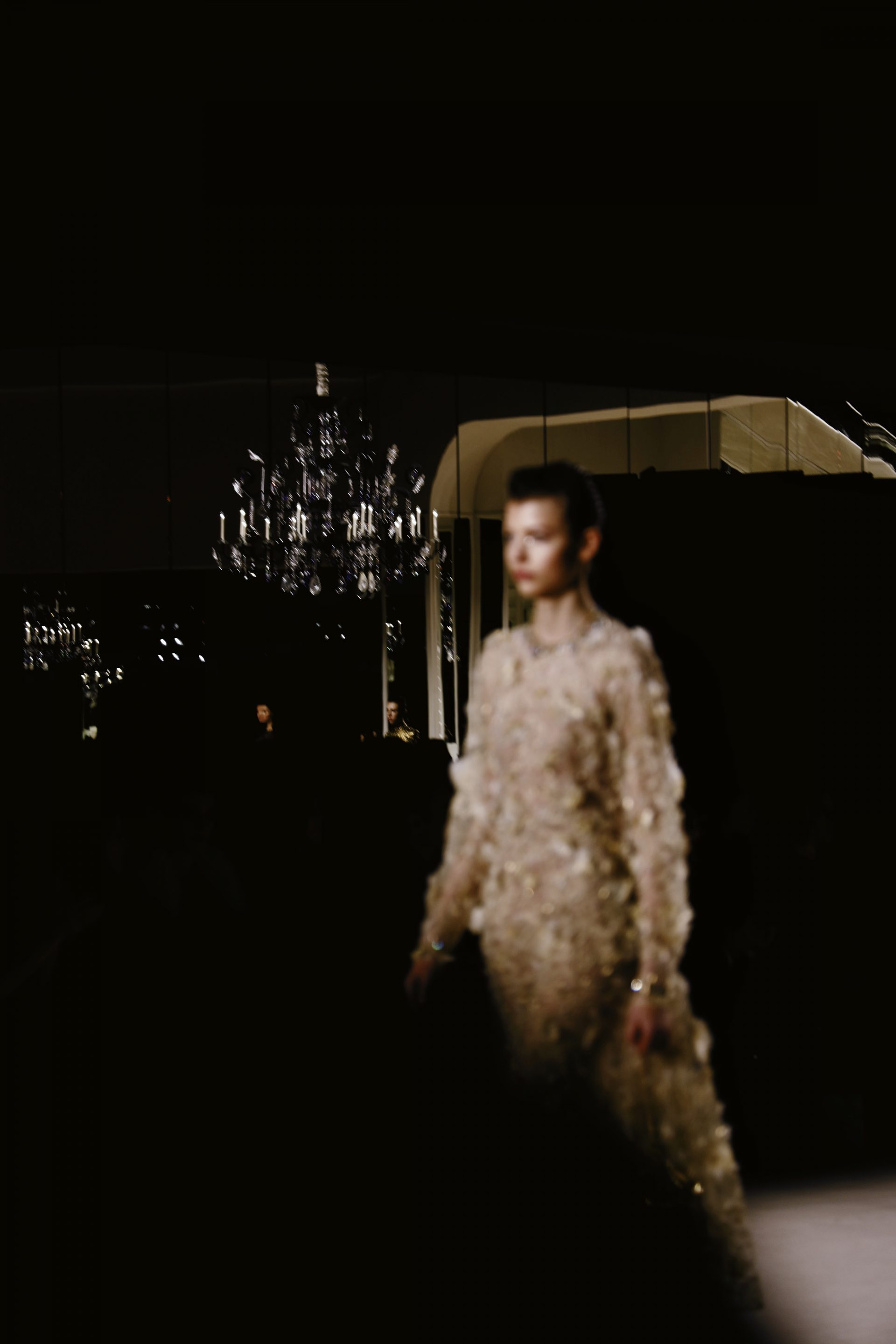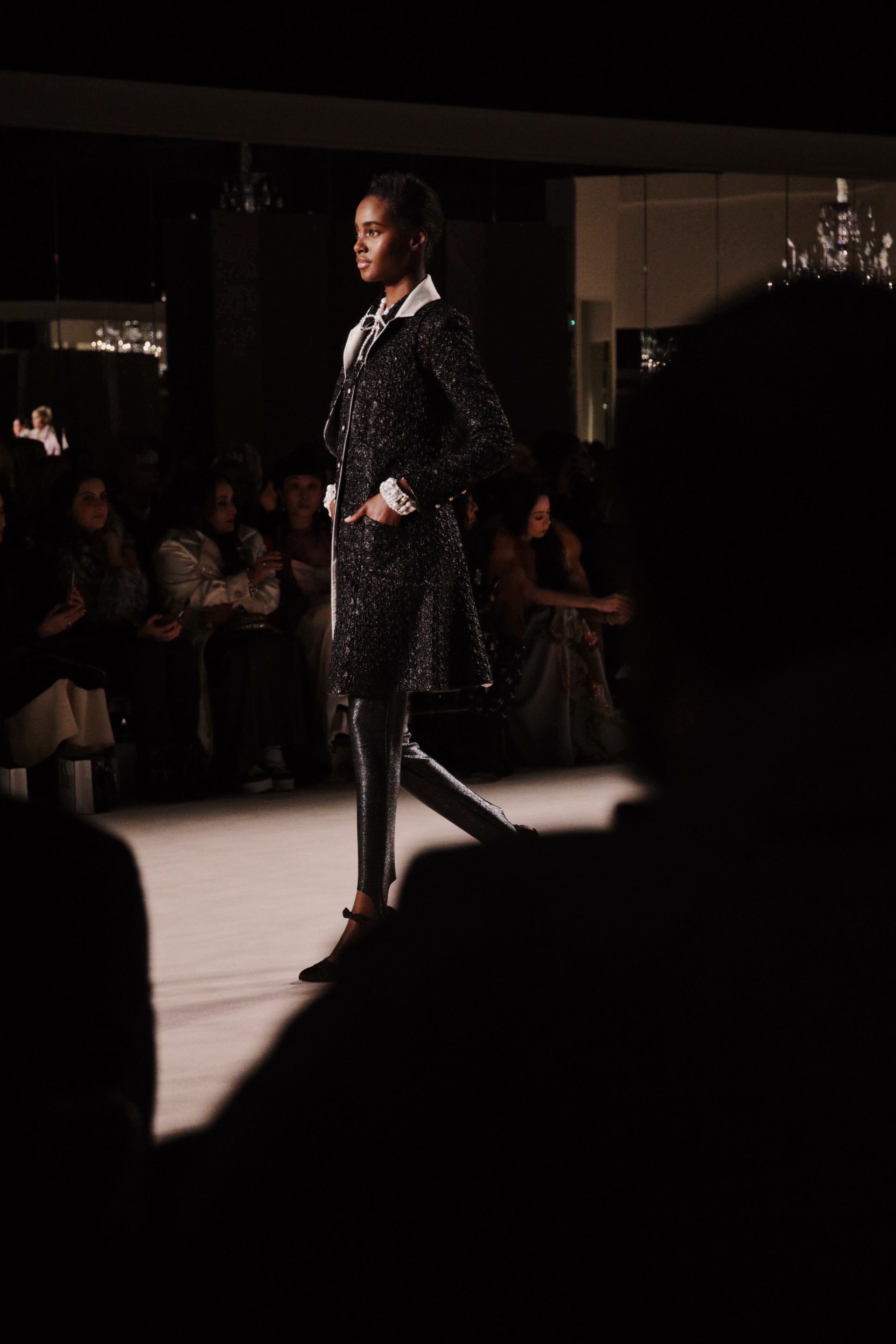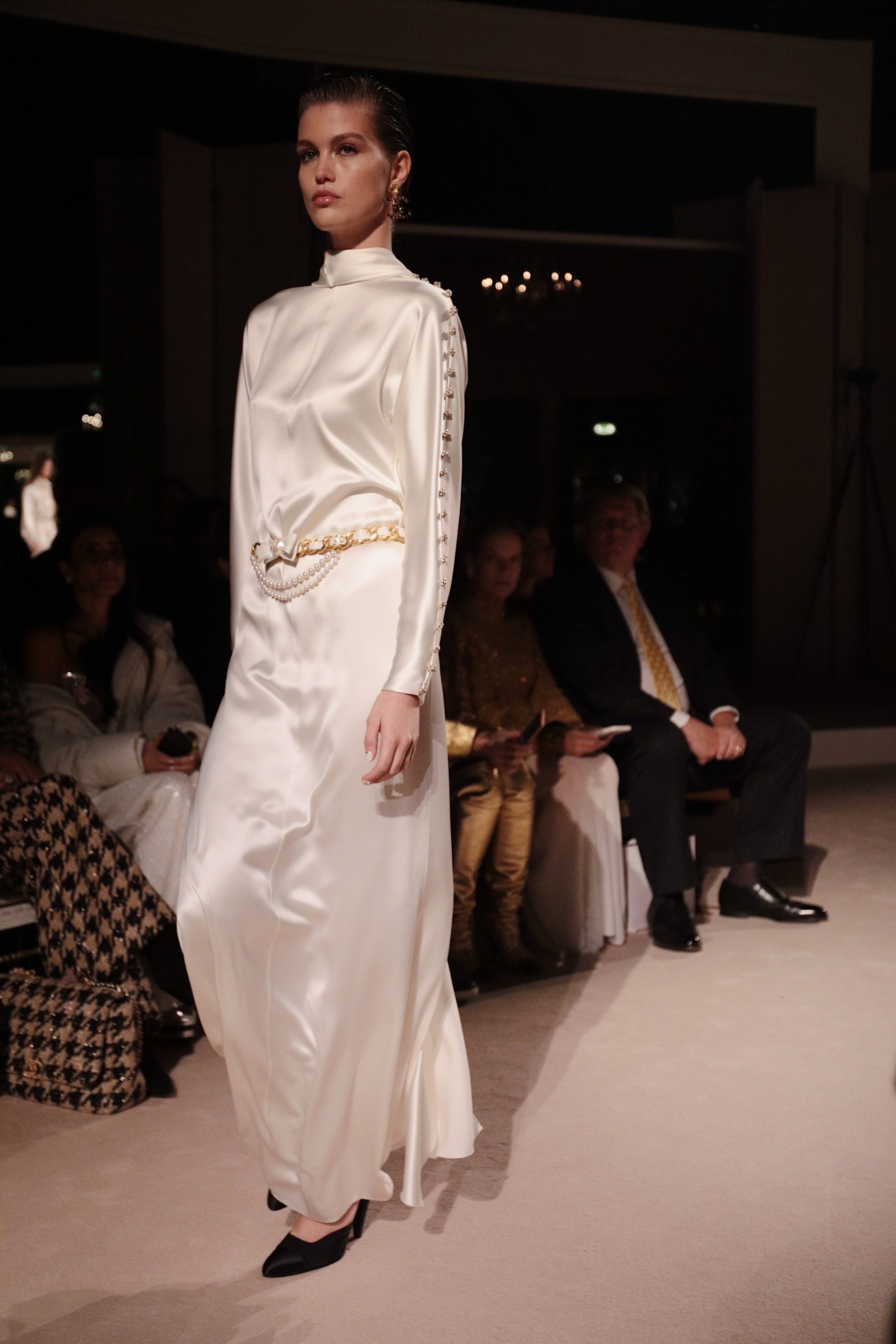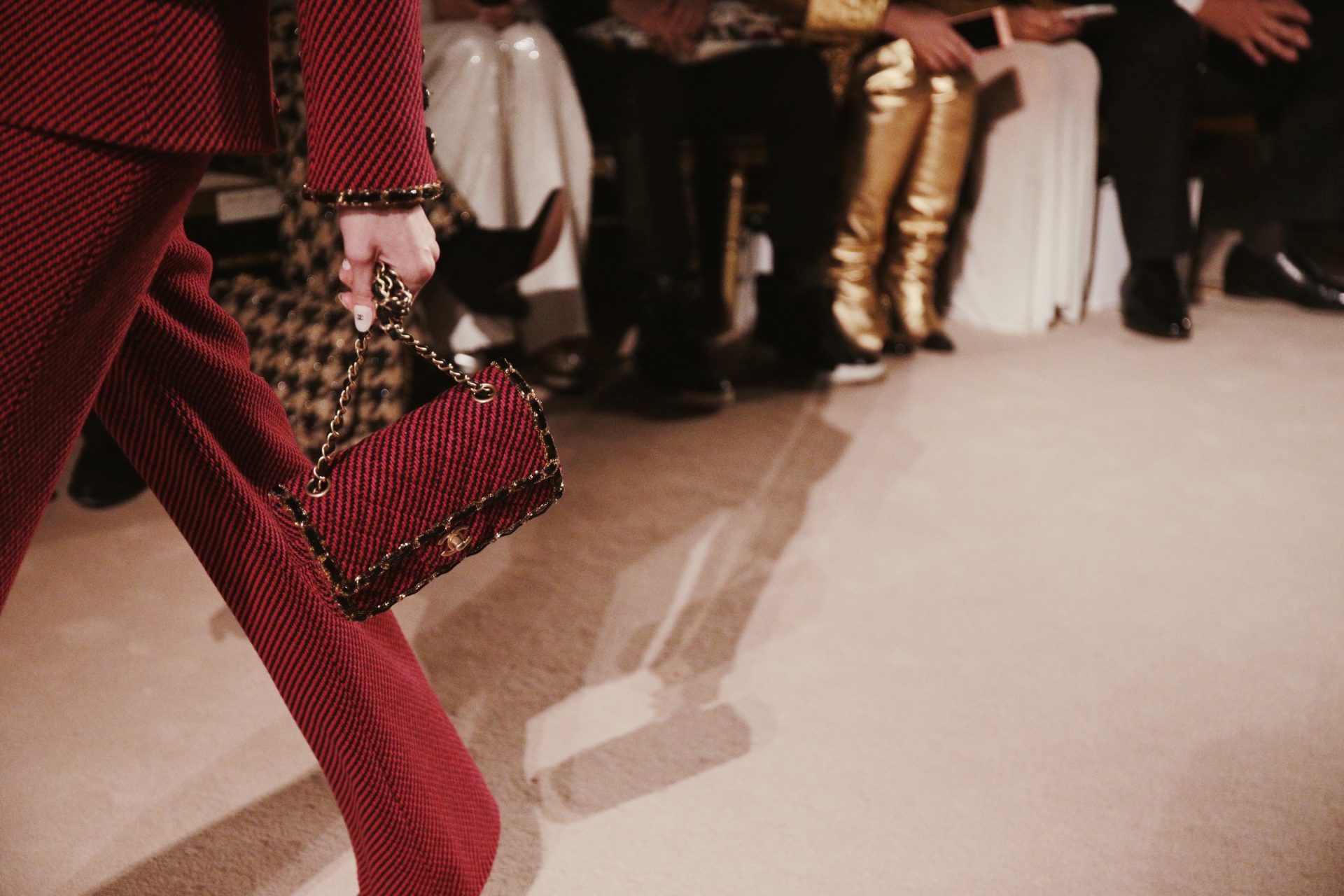
CHANEL Métiers d’Art 2019/20 31 Rue Cambon #chanelmetiersdart #le19m
At 31 rue Cambon, the legendary staircase leads to the Haute Couture salons on the first floor and to the Creation studio on the third floor. And between the two, untouched by time – Gabrielle Chanel’s Apartment.
We have been invited to the heart of french fashion house Chanel. On the 4th of December when we’ve entered the show venue at the Grand Palais here in Paris we were showered with goosebumps and had our eyes wide open. Words truly can not explain what we felt. Thank you Team Chanelfor letting us be a part of your and Virginie Viard’s sophisticated, endless creative and magical vision for Chanel’s Métiers d’Art show. Memories are the most beautiful gift and we will keep these close to our hearts. Shaped by infinite art and dreams.
The entrance hall first, swathed in 18th century Coromandel screens, with a Moorish statue in sculpted wood that welcomes and invites you into the honey and golden hued salon, where crystal pendants cascade from the gigantic chandeliers. The light gently reflects and diffuses, caressing a bronze deer and doe, falling on the silver-gilt caskets, enveloping the space in a magical aura. Within this unique setting, Mademoiselle Chanel would seek refuge in-between fittings. It was here that she would become Gabrielle again, here that she would dream, contemplate, receive her closest friends, surrounded by her favourite objects, her books and her symbols. Feminine and intimate, this apartment – that still feels inhabited – has always attracted Virginie Viard, who likes to visit it regularly: “Because it’s such a welcoming space. I love the huge sofa in beige suede. Karl liked to surround himself with deep divans too. In fact, Gabrielle’s apartment reminds me of Karl’s first apartment that I knew, where one would sit on four-poster beds disguised as sofas. So, for this Métiers d’art collection, I wanted it to revolve around Gabrielle’s apartment.”
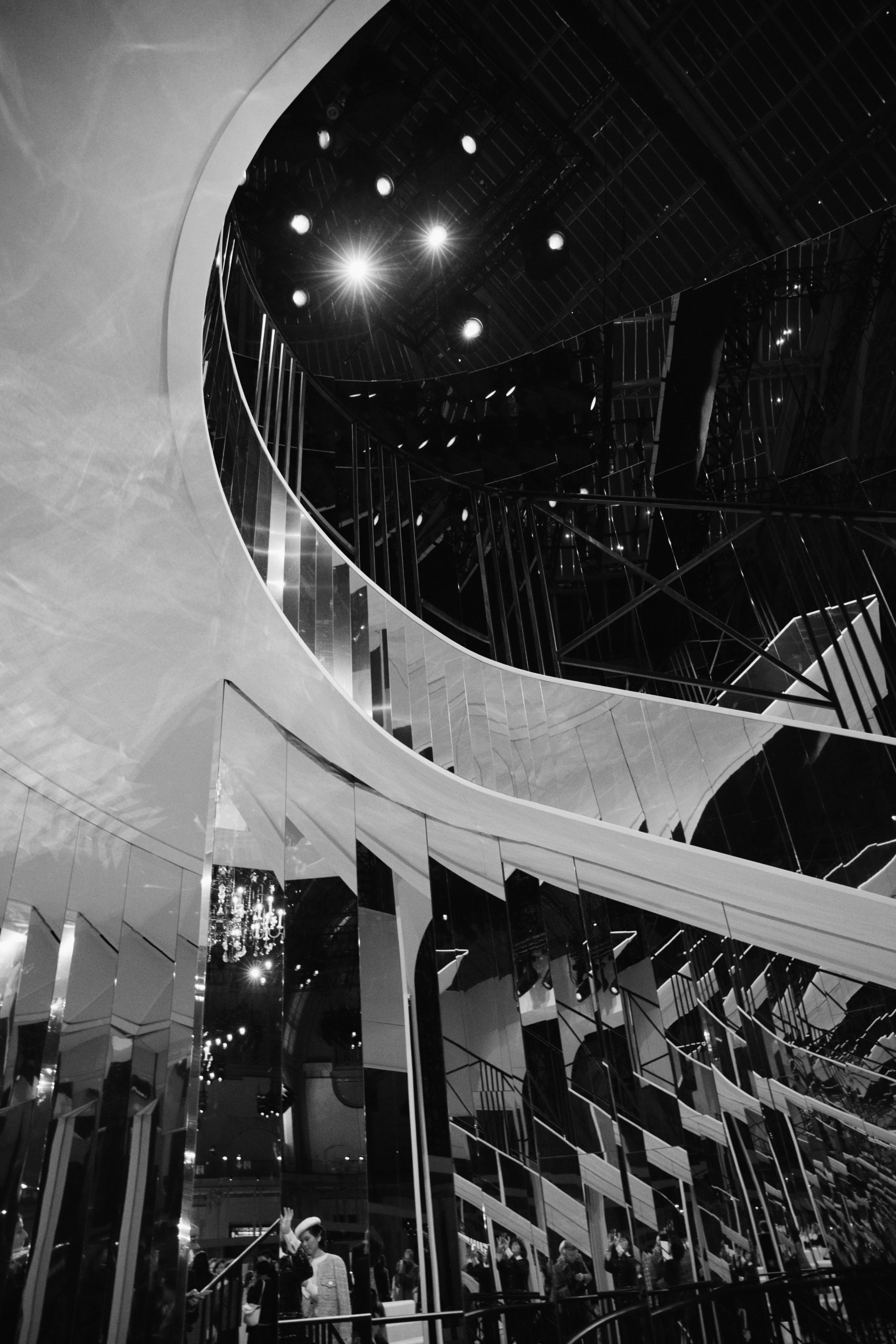

Last spring, when she discussed this idea with Sofia Coppola, a long-standing friend of the House of CHANEL, the film director became enthusiastic and began thinking about the conception of a décor: “We thought about the original shows that were held at 31 rue Cambon, and how great it must have been to see the models walking by so close, and the setting by Coco’s mirrored staircase, which always gives me a thrill to see.” Created in the early 1920s, the cubist faceted mirrored staircase, where Chanel could watch her shows, unobserved and perched, it is said, on the fifth of those beige steps trimmed with white, has become one of the House emblems. It echoes Virginie Viard’s creative process and the moment when she begins thinking about a collection, “I think about the staircase first: I imagine a girl walking down it. Wearing which dress? Which shoes?”
From this conversation with Sofia Coppola comes one of CHANEL’s most beautiful show décors: “Virginie and I talked about the codes of the House, many of which are from Gabrielle Chanel’s apartment, and how to incorporate them into the setting.” Why? Because, in contrast to the grand themes and other countries, such as Egypt or Scotland, that have previously inspired the Métiers d’art collection, Virginie Viard has chosen to pay tribute to the very codes of Chanel, these codes that are embedded in her soul, that are found within the apartment and thus the life of Mademoiselle Chanel.
Embracing the irreverent philosophy of Mademoiselle – to never be like the others – this season moves away from the exotic themes and distant journeys that have today become the norm in fashion. “This is the return to the codes and the very first Métiers d’art show in 2002, which actually took place in the salons, at 31 rue Cambon. That show was very dear to me,” continues Virginie Viard, “the models smoked cigarettes while listening to Lou Reed. It was more of an attitude than a theme.” And Chanel’s attitude is indeed a vocabulary. “Fashion changes but style endures,” Mademoiselle would say. So, a refocus on the style essentials: her codes.

They are all there, in Mademoiselle’s apartment, the protective objects linked to her life experiences, to her loved ones. They are talismans: gold lions, always in pairs, because it was her star sign; the double C interlaced in the majestic jewelled pendant chandelier, next to the 5, her lucky number, and the name of CHANEL’s first and legendary perfume; and on the Coromandel screens, alongside a phoenix, the camellias, Mademoiselle’s emblematic graphic flower, long worn by 19th century courtesans and dandies, that Gabrielle Chanel mischievously introduced into the wardrobes of socialites. They are among the codes – including the bows, the chain, the two-tone – that Virginie Viard has chosen to honour. “For me, these are treasures,” she tells us, “I like to have a CHANEL item in my bag, a piece of jewellery, a compact. It’s always reassuring. Her apartment was like a veritable showcase where she kept all the little treasures given to her by friends, like the ear of wheat painted by Dalí.” Wheat, another code, symbolising life and prosperity, accompanied Mademoiselle Chanel everywhere, appearing as bouquets on her mantlepiece, or sculpted as the foot of a gilded table by Goossens, the goldsmith which today is part of CHANEL’s Métiers d’art. As are the embroiderers Lesage and Montex, the feather and flower maker Lemarié, who will create the wheatsheaf in sequinned embroideries, the camellias sculpted into the garments and the double C in black flowers. “I have completely absorbed the Chanel codes. I saw Karl twist them so much. I have grown up here. I am a child of Karl and Gabrielle.”
For the last thirty years it has been Virginie Viard who liaises with the Métiers d’art, constantly researching and experimenting with them. Behind the silhouettes that will be on the runway on December 4th are the creations born from their endless conversations: camellias printed on ethereal feathers, chains embroidered into braiding and ears of wheat made of aged gold cuvette sequins. “The Métiers d’art provide me with their savoir-faire. They make our creations sublime.”


Who hasn’t dreamt of climbing the mythical Art Deco staircase at 31 rue Cambon in Paris, of entering Gabrielle Chanel’s apartment, of discovering this intimate, baroque space filled with her books and favourite objects, before going downstairs to attend a show in the salon? On December 4th 2019, it’s the entire atmosphere of 31 rue Cambon that has been recreated at the Grand Palais, to present the 2019/20 Métiers d’art collection. This emblematic address, the heart of CHANEL’s Fashion creation, was transposed to the nave of the Grand Palais, transformed for the occasion into a timeless space. An extremely refined écrin for a collection that renders the codes and the allure of CHANEL sublime.
“There is a sort of simplicity in going back to Chanel’s ABC. We don’t need to do too much,” confides Virginie Viard, “I didn’t want the usual long-distance travelling of the Métiers d’art collections, I wanted to stay in Paris. So, we had to think of a new way of doing things. And then there are the codes invented by Gabrielle Chanel and made sublime by Karl Lagerfeld, which I like mixing up too. I like the idea of a patchwork. For me, it has to be on the same level as in real life. I always question the context, which has nothing to do with the way we lived decades ago: what would a woman like today? How would she wear it?”


This very contemporary collection of an iconic elegance comes as jumpsuits made of tweed so fine it is as supple as knitwear, and as short suit jackets with rounded edges, worn with low waisted skirts, slit at the front to liberate legs in motion; and on the ribbon of bare skin between the two, a fine belt in chains and pearls.
A little black jacket buttons up the side, a suit becomes a dress with an asymmetric décolletage and a long pointed train attached to one shoulder, flowing down the back. Inspired by a pink tweed suit created by Gabrielle Chanel in 1960, whose lining was tie-dyed in black, blue, pink and mauve, here the tie-dye is on the outside of the tweed of several suits, and all over the chiffon of a long dress cut into a pointe, trimmed with ethereal feathers, as well as on the braids and on the iconic bags of the House, the 11.12 and the 2.55. Finally, the BOY CHANEL and CHANEL’s GABRIELLE become miniature bags which are worn as jewellery.
Emotion vibrates in the air as the models descend the white-trimmed beige steps of the grand staircase and walk through the salon. Straight, double-breasted coats in black fine bouclé cashmere with belts in long chiffon ribbons embroidered with wheat, ribbons and chains in sequins and beads, appear in succession.
Slender silhouettes pass by in a dress of embroidered black lace, neckline framed with feathers, or in a diaphanous dress of pearl-coloured lace sprinkled with tulle camellias embroidered in relief, accessorised with a minaudière in the shape of a golden cage constellated with strass, a reference to the little bird cage present in Mademoiselle’s apartment.
A long dress in white duchess satin with a pure line, worn with a cape, double-breasted black strapless dresses and a champagne-hued lace ensemble – inspired by the legendary portrait of Gabrielle Chanel photographed by Cecil Beaton in 1937 – of a sensual suppleness that swathes the body like a second skin. The silhouette is punctuated with a godet in the same lace that floats like a trail of perfume…
The camellias made by Lemarié become sculptures and completely cover little evening bomber jackets: one is quilted, with flowers made of duchess satin, with strass at their centre, and worn with black sequinned trousers; the other is white with flowers in silk pongee, their centres embroidered like jewels.

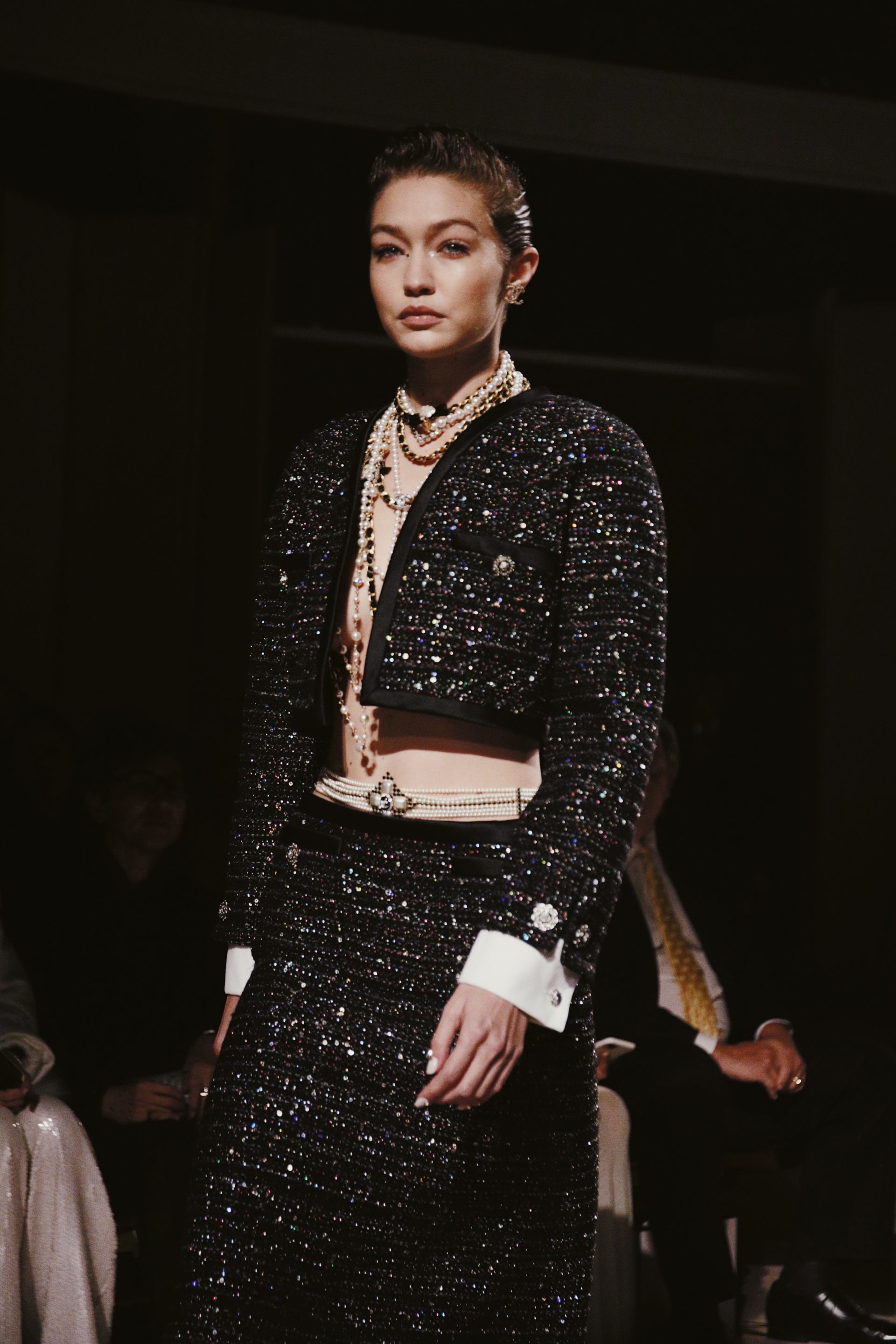
The two-tone, another CHANEL code, features on the shoes made by Massaro – like these gold leather pumps embellished with little bows with black toes – and the graphic suits that alternate black with white.
The wheat, the ribbon, the pearls are embroidered by the House of Lesage onto a precious strapless dress accompanied by a tulle coat of an exceptional refinement.
While black and gold are very present, pink appears as one of the key colours of the collection: soft pink, apricot, raspberry and even garnet on the tweed of both skirt and trousers suits, and also on a tweed jumpsuit. The suit is also revisited in a fuchsia pink satin, trimmed with braid made from an intense pink tweed, while the skirt, pleated at the front and straight at the back, imposes a fluid and liberated allure.Diaphanous and regal, dresses in the colour of weather, as if they’ve been dipped in a summer sky as well as a long dress in silk chiffon with its entirely pleated skirt, streaked with braids made of flowers, halo the show with an otherworldly aura.
Silhouettes are accessorised with an accumulation of costume jewellery: cuff bracelets, plastron necklaces in pearls and strass from which sautoir necklaces and other pendants all seem to spark, chokers with white strass stars, while chain belts are embellished with rows of pearls, bows and camellias. Behind this collection is the constant creative dialogue between Virginie Viard and the Métiers d’art that has lasted three decades. A vision of pure magic that was presented on December 4th2019 at the Grand Palais, within a showcase of Gabrielle Chanel’s talismans, transcended the very notion of fashion to achieve a timeless elegance, allure and beauty according to CHANEL.
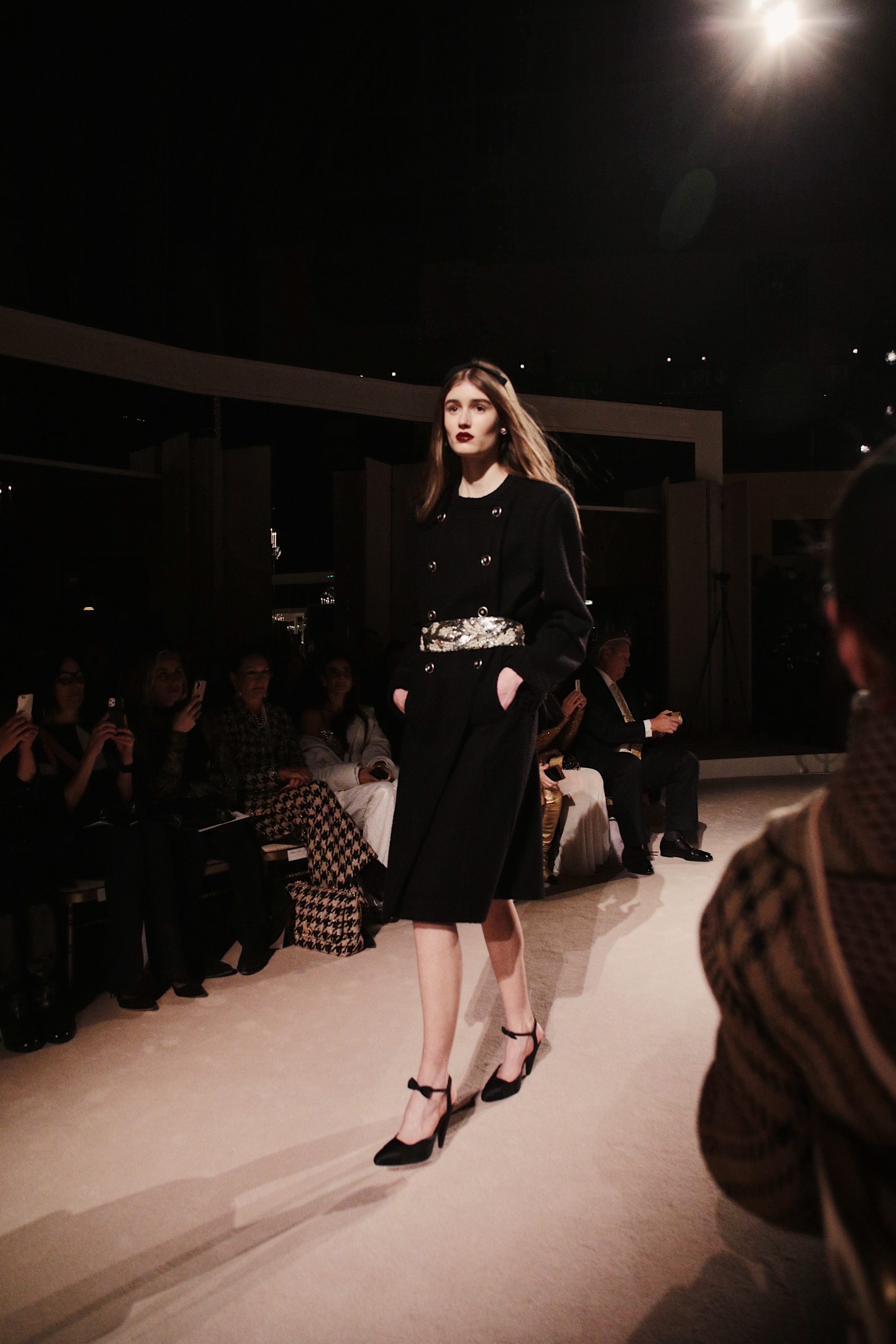


Photography by Sylvia & Julia Haghjoo. Edit by Sylvia Haghjoo.

